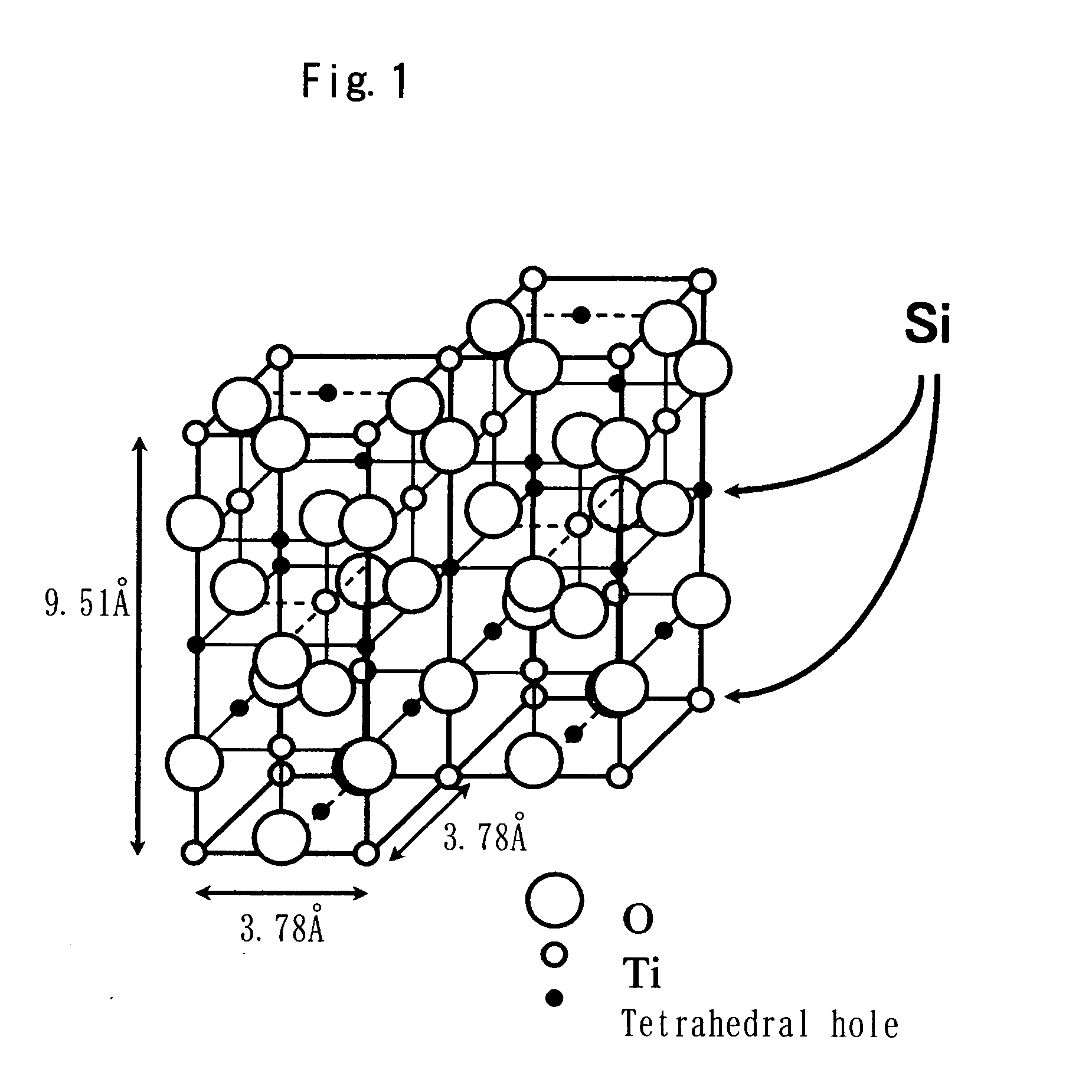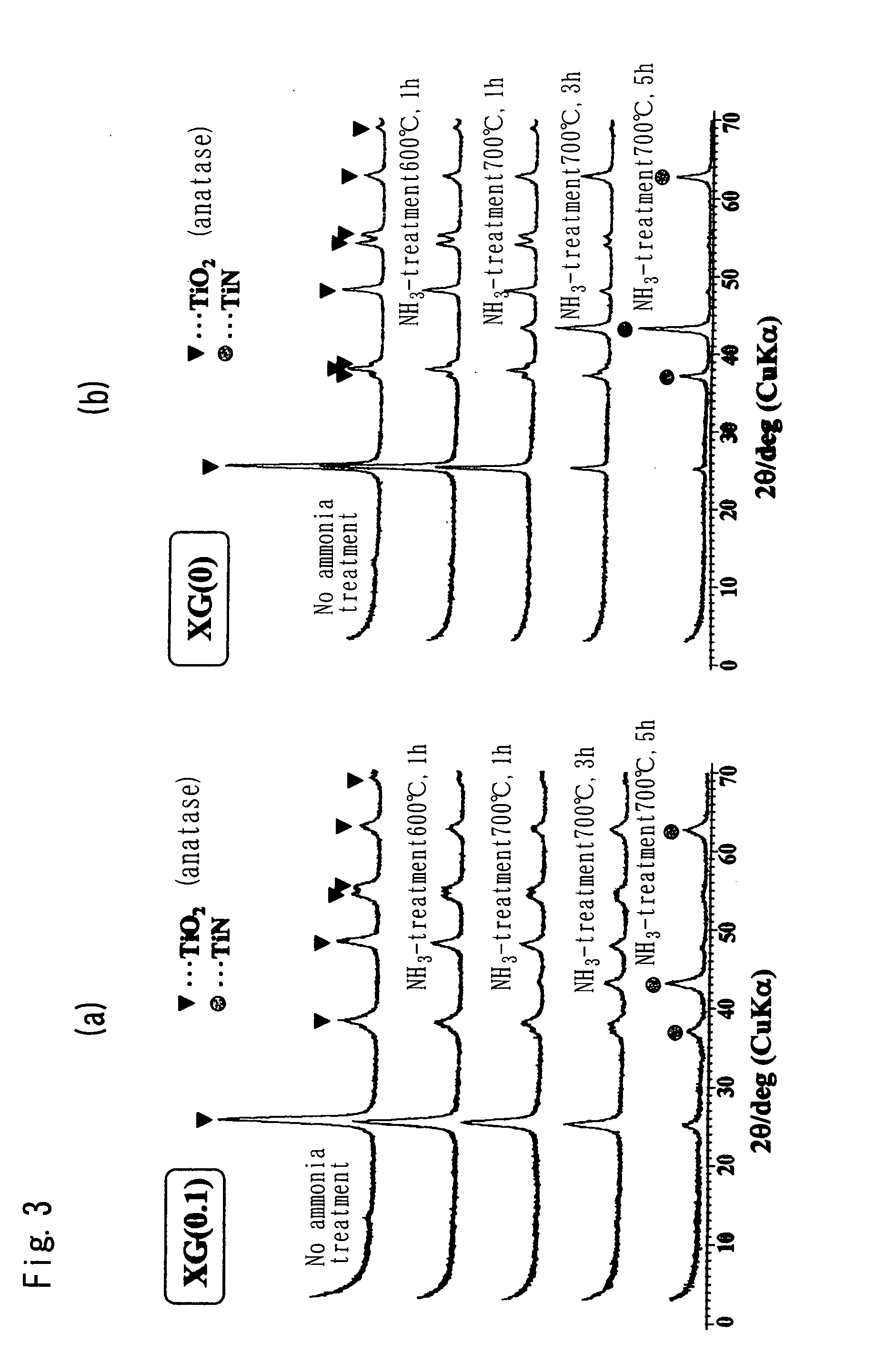Ultraviolet and visible-light-sensitive titania-based photocatalyst
a photocatalyst and titania technology, applied in the field of ultraviolet and visible light-sensitive titania-based photocatalysts, can solve the problems of low absorption efficiency of light in the visible region and the decrease in the efficiency of photocatalytic reactions, and achieve excellent visible light-sensitivity and efficient light-absorbing
- Summary
- Abstract
- Description
- Claims
- Application Information
AI Technical Summary
Benefits of technology
Problems solved by technology
Method used
Image
Examples
Embodiment Construction
(Synthesis of Silica-modified Titanias and Introduction of Nitrogen in the Silica-modified Titanias)
[0021] 25 g of tetraisopropyl titanate, 1.83 g of tetraethyl orthosilicate and 100 ml of 1,4-butanediol were mixed together (atomic ratio of the charged Si / Ti=0.1) and set in an autoclave. After the system inside was replaced by nitrogen, the mixture was heated from room temperature to 300° C. at a rate of 2.3° C. / min. and held at 300° C. for 2 hours. While keeping the temperature at 300° C., the valve of the autoclave was slightly opened and the vapor phase in the autoclave was removed off. After cooling, a xerogel product was obtained. The product was calcined at 500° C. for 30 minutes in air to give a silica-modified titania. The silica-modified titania obtained is designated as XG(0.1). Silica-modified titanias with different Si / Ti ratios are prepared by changing the amounts of the Si and Ti sources, and the products are designated as XG(x) where x is the charged ratio of Si / Ti....
PUM
| Property | Measurement | Unit |
|---|---|---|
| temperature | aaaaa | aaaaa |
| temperature | aaaaa | aaaaa |
| band gap energy | aaaaa | aaaaa |
Abstract
Description
Claims
Application Information
 Login to View More
Login to View More - R&D
- Intellectual Property
- Life Sciences
- Materials
- Tech Scout
- Unparalleled Data Quality
- Higher Quality Content
- 60% Fewer Hallucinations
Browse by: Latest US Patents, China's latest patents, Technical Efficacy Thesaurus, Application Domain, Technology Topic, Popular Technical Reports.
© 2025 PatSnap. All rights reserved.Legal|Privacy policy|Modern Slavery Act Transparency Statement|Sitemap|About US| Contact US: help@patsnap.com



